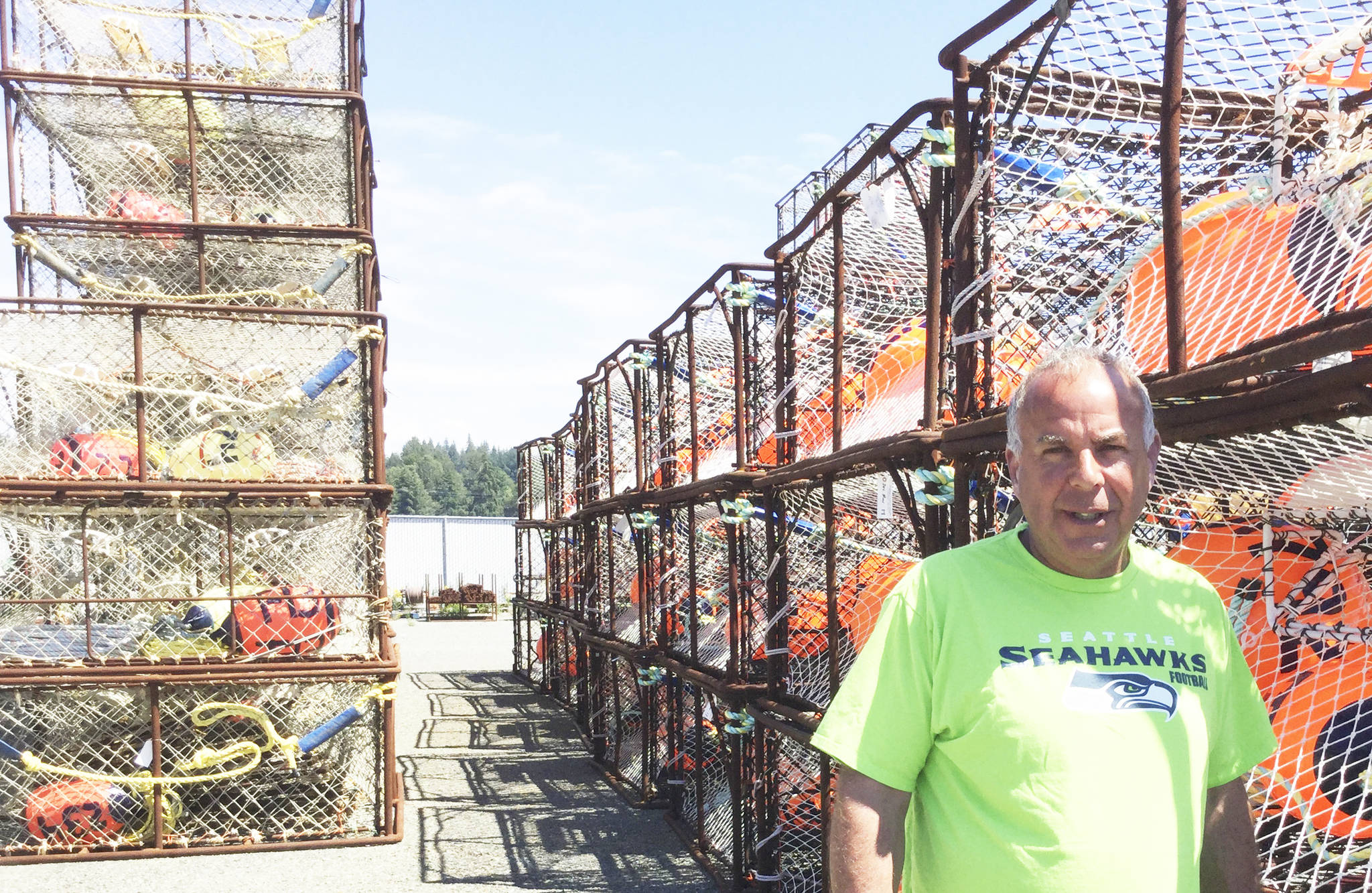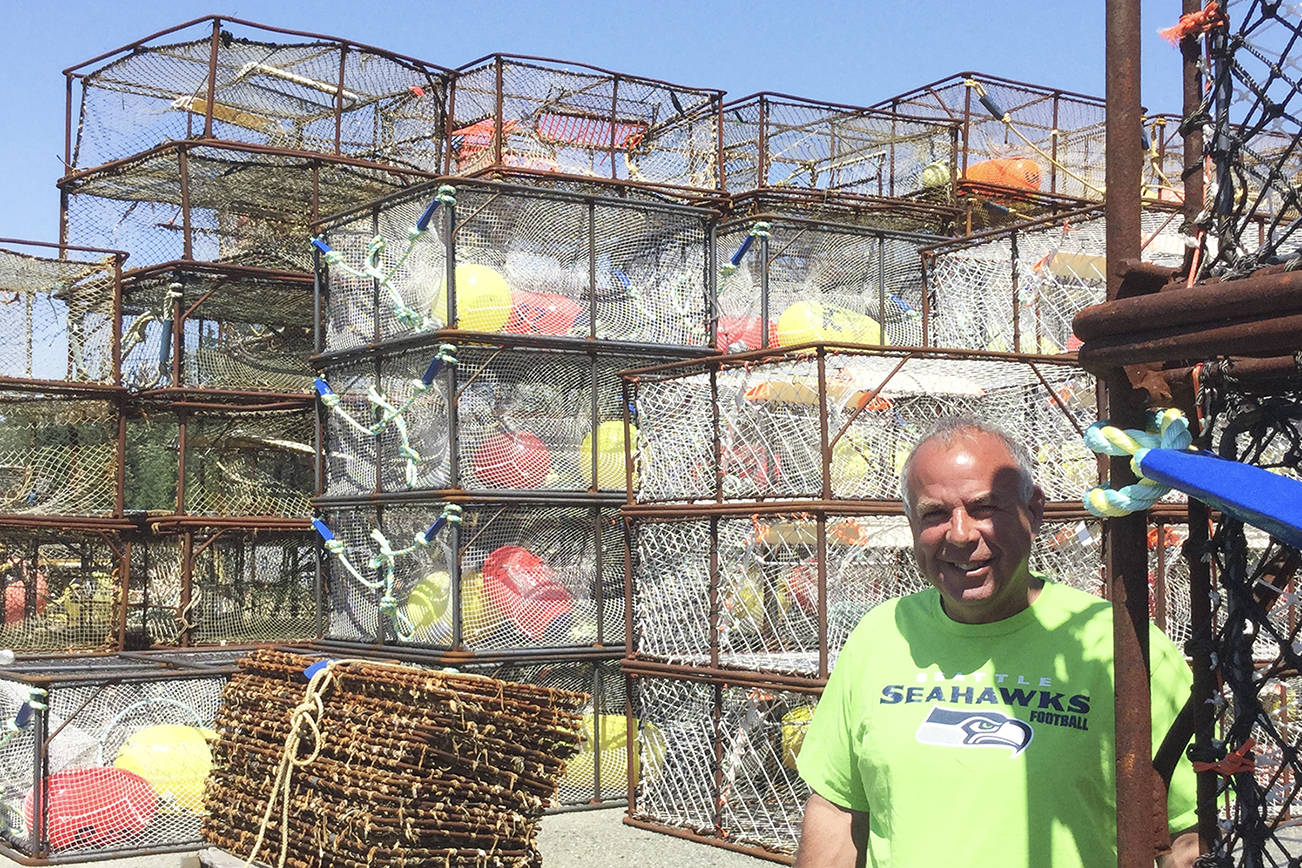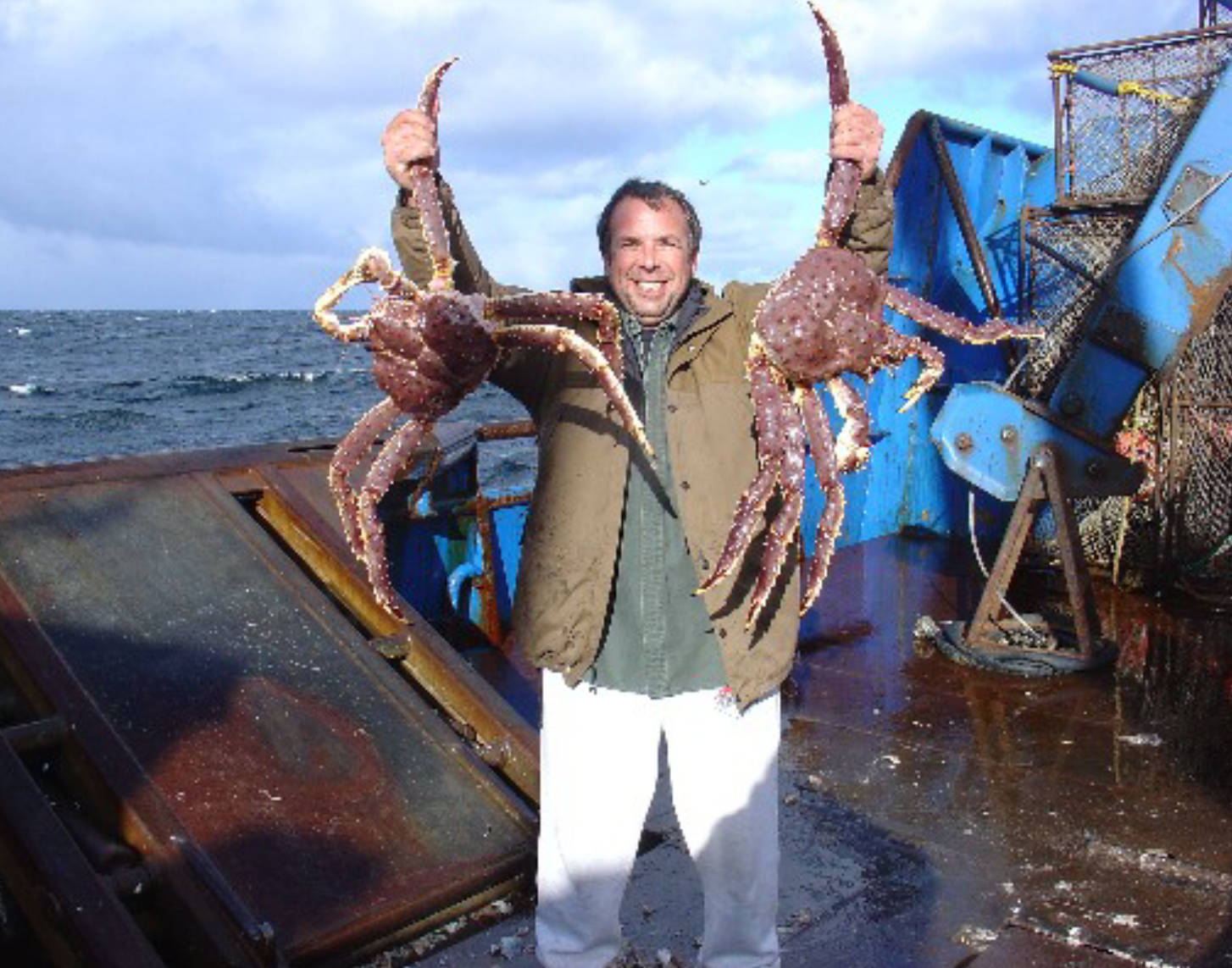Second in a two-part series
ARLINGTON – When the Alaskan crab industry shifted from a derby-style season to a quota system known as “rationalization” in 2006 to cut back on overfishing and preserve existing stock, the transition came with unexpected consequences for businesses like Dungeness Gear Works in Arlington.
Under the former system, a large number of crews competed to catch crab during a limited time window.
Under new quotas, established owners were given quotas that they could fill at a more easygoing pace, which was expected to increase the value of crab.
However, rationalization wound up putting many crews out of work as many small boats found they couldn’t stay in business, Nylander said.
The number of boats fishing king crab fell from 250 to 65 boats, and with restrictive quotas in the harvest, pots languished on Alaska beaches.
“I didn’t make them a king crab pot for six years,” said Nylander, whose pots crab pots can be seen every week on the Discovery Channel’s Emmy-winning reality show “Dealiest Catch.”
Fortunately, Nylander diversified, manufacturing plenty of black cod and Pacific Cod pots, and he sold a lot of them to the Russians in the Barents Sea above Norway to keep his company’s head above water.
“The Russians were my top customer for about four years after rationalization,” Nylander said.
After six years, they started ordering king crab pots a few more at a time – until at the height of his business after quotas he was turning out just over 500 king crab pots a year.
During that time, he heard that his trademark pot had been shipped to a factory in China where engineers were going to re-create it. The mass-produced end product undercut his pricing, but it also underwhelmed captains who found it too heavy, unwieldy and made from inferior materials. The pots are still sitting by the dozens on Alaska beaches.
Industry regulars maintained that Nylander’s pots still fished better.
“If I gouge my customers, then one day I’ll have a competitor. I approach it from a fair price, and continue to improve on the product, and plug away,” he said.
Through research and experimentation, Nylander has incorporated valuable features into his product. For example, his golden crab pots include some rounded corners for better drag across the ocean floor, with less risk of snagging.
He has analyzed old gear to see where it was weak and beefed it up, and created accessories that attach to the pots to make them more attractive to crab and fish. Sometimes it comes down to the best color of nylon mesh (hot pink for some), or observing the shiniest, flashy designs popular in sports fishing lures for inspiration.
Most importantly, he has developed pots for more than one use, which are adaptable depending on the harvest.
Nylander saw that need when he started in the industry after a couple of large vessels used pots to harvest black cod in the Gulf of Alaska. Smaller boats used long hook lines to fish and petitioned the federal government to outlaw pots. Years later whales saw the cod lines as their newest meal tickets, and taught their young generations how to harvest from the hooks.
“They will literally eat every fish off the hook, and a fisherman brings up nothing,” Nylander said.
With cod pots, he said, “The whales just swim up to them, can’t get the fish out, so they swim away.”
A new law later permitted fishermen to put away their longline gear and use pots to trap the bottom-dwelling black cod.
The change brought a smile to Nylander.
“The timing couldn’t have been better for us because now the amount of money spent, and I have to pay for this place, the black cod was a blessing in disguise,” he said.
His main office includes a small warehouse where they store lines and buoys, and workers perform some hand assembly. In 2015, Nylander got approval from the city to build a 10,500-square-foot accessory building behind the office that is where the pots now are manufactured.
This spring, the company did well. “Our customers would rather be catching black cod than feeding the whales,” Nylander said.
Helping others
The fishing and crabbing industry is a tight-knit community that looks after its own.
Nylander has donated to the Seattle Fisherman’s Memorial, and more recently contributed to the F/V Destination Memorial Fund that sank in the Bering Sea in February 2017, taking the lives of the six crewmen who were fishing for snow crab.
The money goes toward college tuition for the kids who lost their fathers at sea. “I support my industry in any way and shape I can,” Nylander said.
Nylander has consulted on various projects with Alaska and federal fish and game agencies. He has done studies on endangered stellar sea lions and killer whales that were killing the baby sea lions for sport.
For a man who makes his money selling pots, he often finds himself a strong voice among conservationists adamant that through better-designed traps, the legal permitted crab and fish by size and gender can be harvested and contained, while still providing enough escape hatches for younger ones to return to the nursery to fully age.
The latest news from the Bering Sea is a proposal to allow pots to catch halibut.
“The killer whales are eating all the halibut off the hooks now,” Nylander observed. “They’ll follow them around for days. The whales seem to prefer black cod over halibut, but if they can’t eat one, they’ll have the other.”
Nylander is lending his expertise once again, working with government agencies on regulations for the halibut pot fishery.
He said if it all works out, he will be able to modify king crab-cod pots so they can trap some of the big halibut.
Nylander already has an adapted pot in mind that will fill government and the industry’s need, without letting in other sea life that isn’t meant to be the catch of the day.
“If I ever get bored, and I run out of ideas, it’s probably going to put me out of business,” Nylander said.









